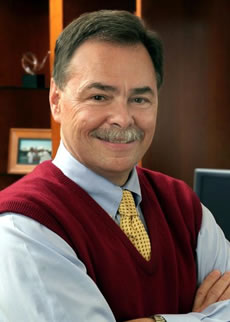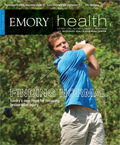Out of the silos

Fred Sanfilippo, MD, PhD
The debate on health care has caught the attention of policy groups, insurers, and patients alike. As lawmakers grapple with the best approaches to transform our current system, academic health centers like the Woodruff Health Sciences Center at Emory already have been busy exploring and testing models and initiatives to overhaul health care.
As we refocus health care from the treatment of diseases to the treatment of individuals, and the management of health through prevention and wellness, one truth continues to emerge in successful models of health care delivery: interactive teams that span disciplines, specialties, and professions are vital to the process. When we break out of clinical specialty and academic silos, we discover a wide range of perspectives that can serve complementary and synergistic roles in providing the highest performance—in not only delivering health care but also educating students and conducting research.
Take, for example, Emory’s approach in discovering progesterone for treating traumatic brain injury (TBI). This first new potential treatment in 30 years results from years of work by one persistent researcher, Don Stein, and a team of basic scientists, emergency medicine doctors, statisticians, neurosurgeons, trauma surgeons, and other colleagues at Emory. The team approach to validate what may be the first-ever effective treatment for TBI is now spreading across the United States to 17 trauma centers that are participating in a clinical trial led by Emory and funded by the NIH.
In the Emory ALS Center, the multidisciplinary team approach extends from the clinic to the research lab. Patients with amyotrophic lateral sclerosis attend a clinic where the physicians, nurses, social workers, respiratory therapists, nutritionists, and others all come to them. The center’s team focuses on increasing independence and quality of life for those with ALS. The team puts the patient at the center of the experience, as the most effective way to manage a person’s health. And behind the scenes, Emory researchers—including neurologists, geneticists, and biochemists—are looking for the breakthrough to cure this devastating disease.
Throughout this issue, you’ll read over and over again of successful examples of health care that are working because of multidisciplinary and interdisciplinary approaches—from developing a treatment for TBI to improving the quality of life for people with ALS, from finding the earliest indicators of Parkinson’s disease to Emory’s comprehensive approach to heart failure and cancer. These stories confirm that academic health centers like the WHSC, with their broad range of services and disciplines, are the natural leaders in transforming health and healing—by working together.
Fred Sanfilippo, MD, PhD
Executive Vice President for Health Affairs
Please share your feedback at evphafeedback@emory.edu.


